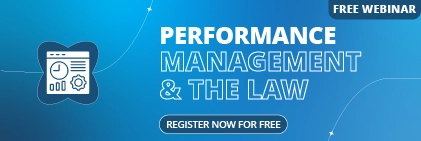Performance management drives organisational success by aligning employees with company goals and supporting their growth. For years, annual performance reviews were the standard, with managers and employees meeting once a year. In these meetings, they would evaluate past performance and plan ahead for the future of their team. However, this old-school method is quickly losing favour in modern businesses. Annual reviews are time-consuming, often inaccurate, and can leave employees feeling judged. In today’s fast-paced business world, relying on them can hinder progress. That’s where the game starts to change.
Enter continuous performance management, a modern approach that’s shaping the way new businesses manage employees. Instead of waiting a year, it focuses on regular check-ins, ongoing feedback, and real employee development. Companies like Adobe and Google have ditched traditional reviews and seen very substantial boosts in engagement and productivity. For HR managers and business owners, this shift is a chance to build a stronger, more motivated team. This blog post dives into why traditional reviews are outdated, explores performance review alternatives, and shows how tools like Sentrient can transform your performance management system. Let’s rethink how we manage performance and make it work for everyone.
The Flaws of Traditional Performance Reviews
Traditional performance reviews have been around forever, but they’re riddled with problems that make them less useful today. Let’s explore some of these issues.
Time-Consuming Process
Getting ready for an annual review is a slog. Managers spend hours gathering a year’s worth of data. This means going through notes, emails, and half-remembered chats. It wastes time that could be used more effectively elsewhere in the business. Scheduling these meetings is another headache, often clashing with daily work and dragging down productivity. These meetings are often not only unproductive, but also actively take time away from important work that needs to be done. For busy teams, this feels like a wasteful chore rather than a helpful exercise.
Often Inaccurate
Accuracy takes a hit too. Relying on memory means managers might focus on recent wins or failures. This is known as recency bias, and is a real issue in performance management meetings. They might let one trait, good or bad, dominate the whole review. These biases muddy the waters, making reviews more about perception than reality. Inaccurate reviews often cause harm to both the business and the employees in question.
Demotivating for Employees
Worst of all, annual reviews can sap motivation. Piling up feedback for one big meeting often feels like a critique session, not a growth opportunity. Employees might hear about mistakes from months ago with no chance to fix them. It’s discouraging, not empowering. Meetings like these often create rifts between teams and managers. That’s why many are turning to modern performance management solutions to fix these flaws.
The Rise of Continuous Performance Management
Say goodbye to annual reviews and hello to continuous performance management. It’s a fresh take that’s gaining traction fast. We’ll have a look at a brief overview of this new system, and the benefits it provides over traditional systems and outcomes.
What is Continuous Performance Management?
This approach is all about keeping the communication lines open. It starts with clear goals, then uses regular check-ins, like monthly or quarterly, to track progress and tweak plans. It’s less about judging past performance and more about building skills for the future. This style helps ensure your employees maintain and improve engagement throughout the year, and are always improving and building their skills. Development, not just accountability, is the name of the game.
Benefits of Continuous Feedback
The perks are clear. Employees stay engaged when they get feedback often. It ties them to company goals and shows they’re valued. It also keeps everyone aligned, with no guesswork about priorities. Plus, it’s agile. Business needs will inevitably shift, and this system shifts with them. Big players like Google and Adobe swear by it, seeing happier teams and better results. The process takes more time for the business, but the benefits your company can reap are numerous. If you’re hunting for effective performance management strategies, this is a top contender.
Best Practices for Effective Performance Management
Building a great performance management system doesn’t have to be hard. Here’s how to do it right. We’ll go over these briefly, with more detail available by checking out Sentrient’s employee performance management system.
1. Setting Clear Goals and Expectations
Start with goals that click. Use the S.M.A.R.T. framework: Specific, Measurable, Achievable, Relevant, Time-bound. Clear goals reduce confusion and boost focus. Tie them to your company’s mission, so employees see their role in the big picture. It’s a simple step that pays off big. This framework stabilises your company’s trajectory, keeping you on target and on track to reach your key business goals.
2. Providing Regular Feedback
Don’t save feedback for a yearly check-in. Monthly or quarterly check-ins keep it fresh and useful. Be specific and say, “Your report was thorough, but let’s work on deadlines.” Mix in praise to keep spirits high. Regular chats beat yearly bombshells every time. This ensures your feedback is useful for the project/tasks in question, and can be applied for immediate results.
3. Using Technology to Streamline Processes
Tech can lighten the load. Performance management software like Sentrient tracks goals, collects feedback, and crunches data, all in real time. It includes integrated feedback management and analytics to identify trends. This makes the process smoother, fairer, and far less stressful. These steps turn performance management into a strength, not a struggle. Using technology helps streamline the performance management process, transforming it into real and, more importantly, practical actions for your business.
4. Alternatives to Traditional Performance Reviews
Ready to ditch the old ways? Check out these performance review alternatives that actually work.
5. OKRs (Objectives and Key Results)
OKRs keep it simple: set objectives and measurable results to track. Google loves them for aligning teams with company goals. They’re straightforward, outcome-focused, and perfect for keeping everyone on track without the annual review baggage. Breaking tasks down into OKRs keeps your team’s focus steady and your business’s overarching goals in mind. It’s a great tool for managers who often need to manage many employees, where information can easily get confused.
6. 360-Degree Feedback
This one’s a team effort. Feedback comes from peers, subordinates, and bosses, not just the manager. It gives a full picture of performance, identifying things a single reviewer might miss. 360-Degree feedback is a great tool in employee performance management, allowing you to eliminate all possible biases and build a comprehensive overview of your employee. It also builds a culture of collaboration and growth.
7. Regular Check-Ins
Think quick, casual chats, likely weekly or bi-weekly. These focus on what’s happening now: progress, hurdles, and next steps. They’re less formal, more supportive, and keep issues from festering. These options make modern performance management solutions feel alive and practical.
The Role of HR and Managers
HR and managers are the heart of any performance management system. Here’s how they make these systems perform at their best.
Developing Performance Management Policies
HR sets the rules, and they need to make that clear. Policies on goals, feedback, and growth that fit your company’s vibe are all essential when implementing a performance management system. They keep things fair and open, so everyone knows the score. In Australia, they also ensure compliance with laws like the Fair Work guidelines.
Providing Training for Managers
Managers need skills to shine here. Manager training for performance management covers giving feedback, coaching, and listening well. HR can roll out workshops or tools like Sentrient to help. A trained manager is one of the best assets a business can have. When HR and managers team up, the system runs like a dream.
Measuring Performance Without Annual Reviews
No annual reviews? No problem. Here’s how to gauge performance with continuous performance management.
Key Performance Indicators (KPIs)
KPIs are your specific metrics tied to company goals. For a marketer, it might be leads generated; for a coder, bugs fixed. Track them often to see who’s rocking it and who needs a hand. Common practices involve taking measures before and after significant changes in your company to see the impact it’s had on your core operations.
Peer Reviews and Team Feedback
Get the team involved. Regular huddles or anonymous surveys let peers weigh in. It’s a wider lens on performance and builds trust across the board. These methods keep you in the loop without the yearly grind.
Fairness and Transparency
Make sure the process is open and fair. Spell out expectations and stick to them – no favouritism or surprises. Fairness keeps trust alive and employees on board.
Compliance with Labour Laws
Assuming you’re operating in Australia, you will have to follow the Fair Work Commission rules and regulations. Document everything from goals and feedback, all the way to decisions to stay legitimate. HR’s job is to balance effectiveness with compliance, so your performance management system stands up to scrutiny.
Leveraging Technology in Performance Management
Tech takes performance management to the next level. Here’s how.
Performance Management Software
Tools like Sentrient are gold. They automate goal tracking, gather real-time feedback, and offer 360-degree reviews. Analytics show you patterns, so you’re not guessing who’s thriving or struggling.
How Technology Enhances Performance Management
Real-time data means instant insights. Automation reduces administrative tasks, enabling managers to focus on coaching rather than clerical work. Feedback flows more easily, and decisions get sharper with data backing them up. It’s a must-have for modern performance management solutions.
Key Takeaways:
- Traditional reviews are time-consuming, inaccurate, and demotivating for employees.
- Continuous feedback enhances engagement, alignment, and organisational agility.
- OKRs, 360-degree feedback, and regular check-ins replace annual reviews.
- Tools like Sentrient streamline feedback and goal tracking.
- HR and managers are essential for policy development and effective training.
- Legal compliance matters.
- Modern systems boost engagement and productivity.
FAQs
1. What is the difference between performance management and performance appraisal?
Performance management is an ongoing cycle of setting goals, giving feedback, and fostering growth, while appraisals are one-off, past-focused reviews. Continuous performance management prioritises development over judgment.
2. How often should performance reviews be conducted?
Skip annual reviews for monthly or quarterly check-ins. Regular feedback keeps employees on track, motivated, and ready to tackle challenges with modern performance management solutions.
3. What are the key components of a performance management system?
It’s about clear goals, regular feedback, growth plans, and recognition. Add performance management software like Sentrient to streamline tracking and boost results.
4. How can HR support managers in performance management?
HR should offer managers training in performance management. Utilising tools like Sentrient and creating clear policies helps support managers. This combo helps managers coach effectively and align teams with goals.
5. What are some common mistakes in performance management?
Delaying feedback, concentrating solely on past mistakes, or setting goals that are not aligned can significantly impact morale negatively. Effective performance management strategies avoid these traps.
6. How can technology improve performance management?
Sentrient automates tracking, delivers real-time data, and simplifies feedback. This cuts stress and powers up your performance management system with smart insights.
7. Is it necessary to have formal performance reviews?
Nope! Continuous performance management with regular check-ins often works better, keeping employees engaged and goals in sight without formal annual hassles.
8. How can I make performance management more engaging for employees?
Make it a two-way street. Listen to their goals, focus on growth, and celebrate wins. Modern performance management solutions thrive on this approach.
9. What are the legal requirements for performance management in Australia?
Follow Fair Work rules: keep it fair, transparent, and documented. A solid performance management system stays compliant while driving results. There are a lot of industry awards and regulations, so it’s essential that you’re aware of your rights and responsibilities as an employer.
10. How can I measure the effectiveness of my performance management system?
Check engagement surveys, retention rates, and productivity stats. Continuous performance management shines with these metrics, showing real impact. KPI’s are a gem as well, as they are able to quantify how well you’ve improved.
Read More About Performance Management:
- Performance Management Secrets: What Top Companies Don’t Want You to Know
- Performance Management for Millennials and Gen Z: Key Insights for HR and Owners
- Performance Management: Managing Underperforming Teams Effectively
- Performance Management in Startups: Challenges and Best Practices
- How to Build a High-Performing Team Through Effective Performance Management





